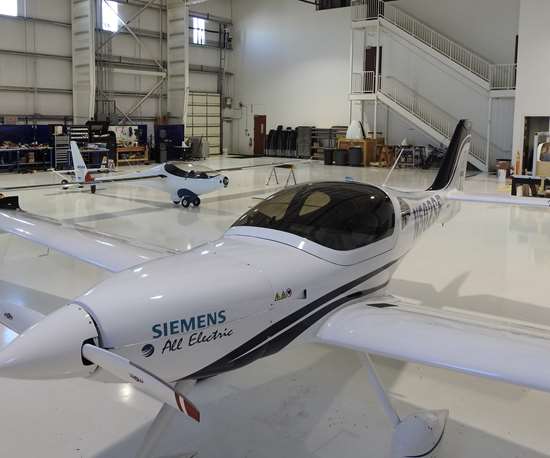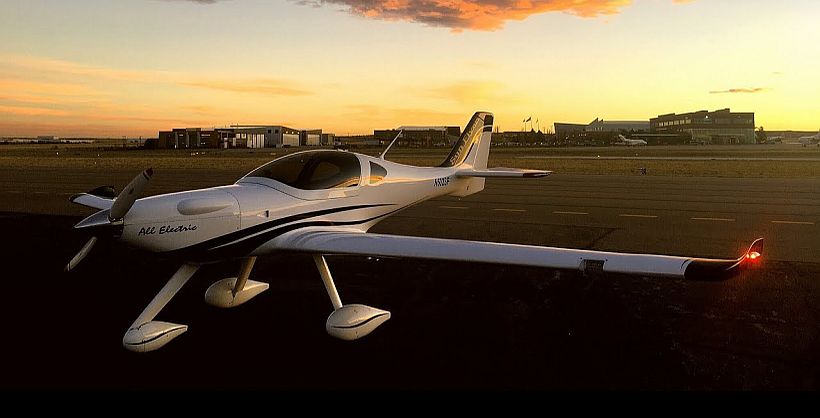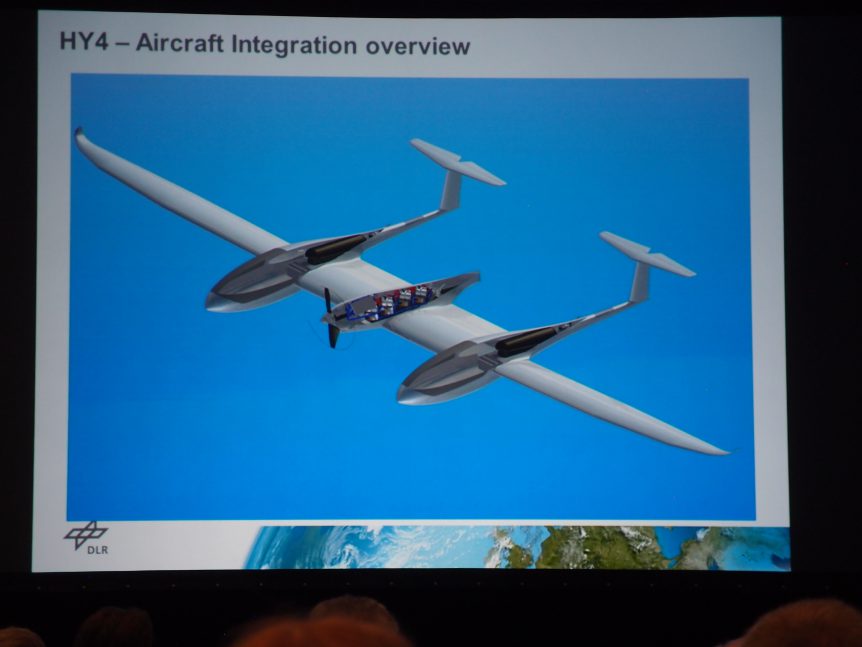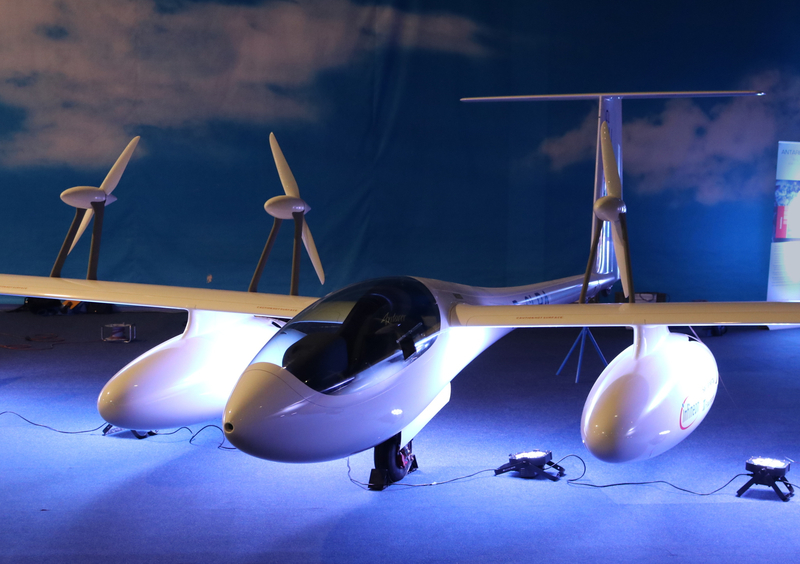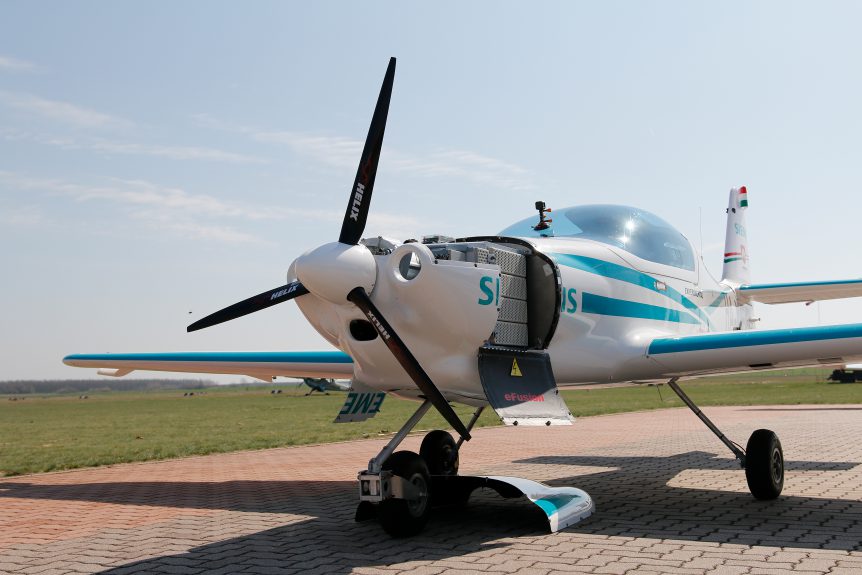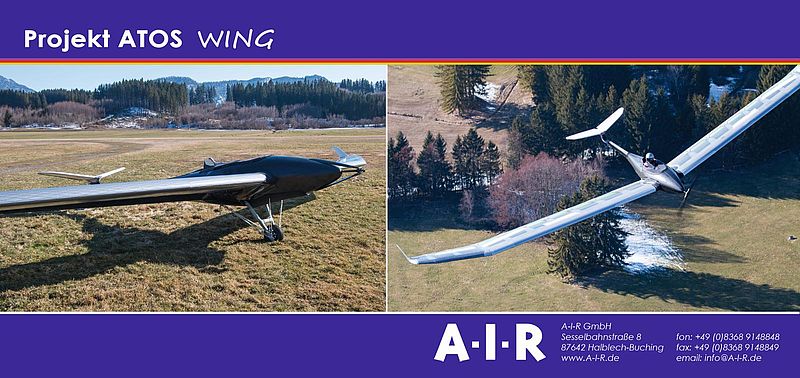Diane Simard, Director and Senior Vice President at Bye Aerospace, keeps your editor updated on happenings at the maker of what were SunFlyers, and which are now eFlyers. The rebranding makes sense. In their press release for the eFlight Expo in Friedrichshafen, Germany on April 11, the company included this explanation. “George E. Bye, Founder and CEO of Bye Aerospace, said eFlyer more accurately represents the aircraft’s high-tech all-electric propulsion system. ‘We originally thought solar cells would be standard on the airplane’s wings,’ Bye said. ‘However, with eFlyer’s primary markets being flight training and air taxi services, it makes more sense to make the price of the airplane as reasonable as possible.’” Bye Aerospace’s primary market is growing, with orders for 60 eFlyers from OSM Aviation , a training resource for many of the world’s airlines. This brings the total of eFlyers to almost 300, achieved despite some roadblocks. In an email to your editor, Bye explained, “In an April 11 email, …
Sun Flyer 2 to be Powered by Siemens Motor
George Bye has been enjoying a year filled with great expectations (and accomplishments). With 121 deposits on the Bye Aerospace Sun Flyer 2 from seven countries, the training aircraft needs only two things to make dreams come true for a large number of people – a motor and FAA certification. Siemens Steps In In a joint press release, Bye, CEO of Bye Aerospace, announced a partnership with Siemens that will see the German firm “collaborate on future development of Bye Aerospace’s Sun Flyer 2.” Bye explained, “We are pleased to announce an agreement with Siemens to provide the electric propulsion motor and inverter for the Sun Flyer program. They will be an active partner through the FAA certification and production phase for the Sun Flyer 2.” Siemens will supply the two-seater with its SP70D motor with a peak output of 90 kilowatts (115 hp.) and a continuous rating of 70 kW (90 hp.). Bye explained the nice “fit” with the …
Sustainable Skies in San Francisco
I’m writing this in the first person, rather than the usual third-person voice that allows me to remain objective about things on which I report. In this case, I have been the recipient of much joy over the last ten years from being an observer of the ongoing progress in electric aviation. Dr. Brien Seeley, founder of the Sustainable Aviation Foundation, asked me to begin writing a blog about electric aviation in 2009. One of my original postings concerned a Kitplanes Magazine contributor, David Ullman – who was this year’s Sustainable Aviation Symposium’s keynote speaker. In 2009, he predicted a great future for electric aviation – most of which has come to pass, and some of which he is creating in his hangar with his fully-instrumented wind tunnel and ambitious blown-wing design. He proposes something called USTOL, Ultimate Short Takeoff and Landing, aircraft that will use a dynamic relationship between their power and lift systems. His vehicle for demonstrating this …
Lange Research Shows Six-Motor, Fuel-Cell Driven E2 at Aero Expo
Lange Aviation explained the large glider-like machine on display at the 2018 Aero Expo this way: “During this year’s AERO in Friedrichshafen, a mock-up of the Antares E2 was displayed publicly for the first time by our sister company, Lange Research Aircraft GmbH. The Antares E2 is an aircraft with an extreme endurance and very high reliability, which has been designed primarily to address maritime monitoring tasks such as fishery control. In order to fulfill the design goals, a novel propulsive system using six fuel-cell systems and six over-wing propulsors has been developed. A Large, Heavy Machine Beyond Glider Status Weighing in at a hefty 1,650 kilograms (3,630 pounds), the Lange E2 carries that weight on a 23 meter (75.45 feet) wingspan. Part of that is the 300 kilograms (660 pounds) of methanol that powers the six 6.7 kilowatt (8.98 horsepower) fuel cells that in turn power the six 15 kilowatt (20.1 hp.) motors. High wing loading brings high speed, …
Two Siemens-Powered Electric Aircraft Debut
A U. S. Debut in Chicago Mary Grady, writing in AVweb, reports that “Siemens brought its prototype electric aircraft to the U.S. this week for the first time, showcasing the airplane at the company’s Innovation Day in Chicago. ‘Electric propulsion is one of the transformative technologies that will help the industry meet the goals of reduced fuel, emissions and noise,’ said Teri Hamlin, vice president of electric propulsion for Siemens. ‘By accomplishing testing on our systems on select flying testbeds in the lower power classes, we are gaining valuable experience and knowledge that accelerates and validates our other developments in hybrid-electric propulsion systems in the high power classes.’“ Testing in Waco Further testing of the technology will take place in Waco, Texas, at the Texas State Technical College Airfield. The eFusion with its Siemens 55-kilowatt electric propulsion unit, “Will be key in data collection on new electric propulsion systems, enabling safety standards and certification efforts for the aerospace market.” Lessons …
Project ATOS Wing Explores Ultralight Electric Soaring
Its translucent wing shimmering on the wall above Hall A7 at Friedrichshafen’s 2018 Aero Expo, A-I-R’s ATOS Wing commanded the attention of show goers. A-I-R (Aeronautic Innovation Rühle & Co GmbH) produces a line of ultralight hang gliders and electrically-powered craft based on a common wing design modified for different weight and performance requirements. Note the large wing at about 35 seconds into this perambulation around Hall A7, along with tantalizing glimpses of the other displays that we will cover in the near future. Although ethereal in appearance, ATOS wings can carry significant loads compared to their minimal weight. The 50 kilogram (110 pound) VRS 280, for instance, can carry an all-up weight of 330 kilograms (726 pounds), an impressive structural weight to gross weight ratio. Coupled with the Wing’s 28:1 claimed glide ratio and 0.55 meters per second (108.3 feet per minute) rate of sink, the Wing will allow long, lazy glides from altitude and even permit modest cross-country …
Eurosport Crossover Sports Many Tricks
We’re used to seeing motorgliders which pop an engine or motor up on a tall stalk behind the cockpit, then retract it into the slim tailboom for minimum drag. Why not do the same with two electric motors on each side of the airplane, tucking them in a slender fuselage for soaring? Emails with Eurosport’s Tom Leite and perusal of the Portuguese firm’s web site and on-line brochure verified that almost everything on the Crossover motorglider is electric and retractable. Tom notes, for instance, “Our motor/props fold into the fuselage: [they are] 3-phase PMSM motors up to 40Kw at takeoff each.” In the video, see the long, spar web-like structure with lightening holes that separates the two motors as they slide into and out of the fuselage. “Our wing span is set from 9.6 to 15 meters and is electrically operated.” Tom refers to the special version that will have extendable and retractable wings, with tip segments sliding out from …
FlyNano Flight Testing Teased
From the frozen north of Finland comes the news that FlyNano has flown its electric prototype. Originally planned to have both two-stroke and electric powerplants, the five-meter span joined-wing flying boat is now only electric, its makers citing the strides made in development of motors and batteries in the last several years for their decision. Designed to stay under 70 kilograms (154 pounds) empty weight, FlyNano has a maximum takeoff weight of 200 kilograms (440 pounds). Its small size and light weight make it possible to fly, based on the video, but with no specifications for motor, controller and battery. A company press release gives a “speed range of 70 – 140 kilometers per hour (43-87 mph) with a service ceiling of 3 kilometers (9,820 feet). FlyNano’s true airspeed is about 140 km/h at 75% power with a theoretical operational distance of 70 km (43 miles).” The statement of “true airspeed” causes one to wonder at what altitude this speed …
Electravia Makes a Good Showing at Aero Expo
Anne Lavrand, founder and President of Electravia, continues to find ways to expand her company’s product offerings while offering well-integrated packages of reasonably-priced electric aircraft and components. At this year’s Aero Expo in Friedrichshafen, Germany, her firm displayed the fuselage of the Electrolight 2, a modified Fauconnet sailplane, fitted with a 30-hp Lynch-type motor, controller, and batteries. It is the least expensive electric motorglider on the market at only 30,000 Euros ($39,600), and allows powered flight for recharging costs of about 0.65 Euros per hour (86 cents). The motor, normally graced by one of Anne’s wooden e-Props, had a forward-folding “clap propeller” or “bec de canard” (literally, the beak of the duck), a variant on the light carbon fiber propellers that e-Props also produces. This should reduce drag and help improve the performance of the Fauconnet, a French version of the popular Scheibe L-Spatz, which Anne notes was flown by every young German learning to fly sailplanes a few years …
Pantera Rollout at Friedrichshafen
Friedrichshafen is the place to be for new aircraft announcements, with PC-Aero yesterday and Pipistrel today showing off new aircraft. Pipistrel, having won the Green Flight Challenge in September, could not rest on its laurels, today sharing the news that, “The revolutionary 4-seat all composite design, featuring retractable undercarriage, 200 kts cruising speed, 1000 NM range, comfortable cabin and a choice of three powerplants – conventional/hybrid/electric – is presented to the World for the very first time.” Those lucky enough to be at Aero 2012 , hall A5, will doubtless flock to see the Pantera, a graceful design that does 200 knots (230 miles per hour) on its 200-hp, Lycoming IO-390 engine while burning 10 US gallons per hour. This relative fuel economy (a recent Mooney ride saw the airplane consuming 16 gallons per hour at a lower speed) allows Pantera to carry four people 1,000 nautical miles (1,150 statute miles). CEO Ivo Boscarol is obviously proud of his new …
- Page 1 of 2
- 1
- 2

